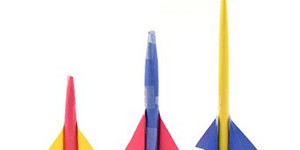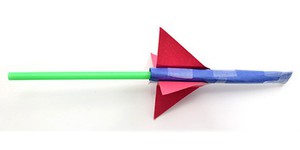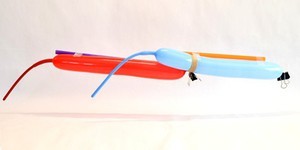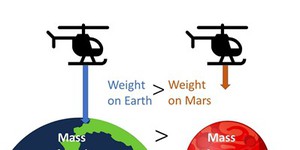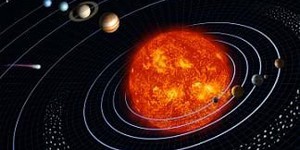Space Exploration Lesson Plans (16 results)
Space exploration is an exciting and wide-ranging area. Getting into space (and back down) is hard, involving rockets and launch vehicles, satellites, spacecraft, re-entry systems, landers and rovers, robots, and orbital mechanics, not to mention hypothetical technologies like space elevators and artificial gravity. To survive and thrive in space, we must understand many additional issues such as human performance in space, the space economy, and the science of astronomical bodies.
|
Select a resource
Sort by
|
Lesson Plan
Grade: 6th-8th
16 reviews
The egg drop project is a time-honored tradition in many science classrooms. Students build a device to protect an egg and prevent it from breaking when dropped. This project typically relates to lessons about Newton's laws of motion or potential and kinetic energy. However, it is also a great way for students to practice the engineering design process, and learn about the importance of design iteration and learning from failure.
Read more
NGSS Performance Expectations:
Lesson Plan
Grade: 6th-8th
5 reviews
This hands-on science lesson will help your students get a more accurate view of the solar system by making a scale model. They will do the calculations, make model planets, and find out where to place them so their model reflects reality. Seeing the relative size of the eight planets and their distance from the Sun displayed before them will allow your students to grasp the structure and vastness of the solar system.
Read more
NGSS Performance Expectations:
New
Lesson Plan
Grade: 6th-9th
In this lesson plan, students will model the complex biologic manufacturing process. First, they will model the cellular expansion process that occurs in a bioreactor. Then, students will lyse the cells to isolate the proteins from the dyed cell debris. Lastly, they will model the advanced filtration process to purify proteins so they can be used as medicines.
Read more
NGSS Performance Expectations:
Lesson Plan
Grade: 6th-8th
37 reviews
Do you need a fun, easy way to teach your students about the scientific method? Try this lesson that uses rockets made from nothing but paper, tape, and straws.
An elementary school version of this lesson plan is also available.
Read more
NGSS Performance Expectations:
Lesson Plan
Grade: 3rd-5th
25 reviews
This lesson will introduce your students to the scientific method using a fun, hands-on activity.
A middle school version of this lesson plan is also available.
Read more
NGSS Performance Expectations:
Lesson Plan
Grade: Kindergarten-5th
3 reviews
In this fun engineering lesson plan, your students will build a rocket-catching device to help a falling rocket land vertically without crashing, using simple and readily-available materials.
Middle school
and
high school
versions of this lesson plan are also available. This lesson was part of the 2025 Science Buddies Engineering Challenge.
Read more
NGSS Performance Expectations:
Lesson Plan
Grade: 3rd
7 reviews
Forces, which we might instinctively describe as pushes and pulls, are acting on us at all times, but we cannot always see them. This hands-on lesson offers a fun opportunity to explore "invisible" forces like gravity and air resistance. Students will build parachutes and investigate how they allow skydivers to safely land.
Read more
NGSS Performance Expectations:
Lesson Plan
Grade: 6th-8th
6 reviews
Learn about real space flight and Newton's laws of motion with this fun lesson! This new twist on a classic project lets your students build a multi-stage balloon rocket that they can launch across the classroom.
Read more
NGSS Performance Expectations:
Lesson Plan
Grade: 6th-8th
7 reviews
In this fun engineering lesson plan, your students will build a rocket-catching device to help a falling rocket land vertically without crashing, using simple and readily-available materials.
Elementary and
high school
versions of this lesson plan are also available. This lesson was part of the 2025 Science Buddies Engineering Challenge.
Read more
NGSS Performance Expectations:
Lesson Plan
Grade: 6th-8th
2 reviews
Space exploration poses many challenges. In this lesson, students will explore how flying a helicopter on Mars is different from flying a helicopter on Earth due to the difference in the helicopter's weight on Mars and the thin Martian atmosphere. Students will follow the engineering design process to design and build paper helicopters that might be able to fly on Mars. Before testing their different helicopter designs, students will revisit the concept of gravity, and apply their knowledge to…
Read more
NGSS Performance Expectations:
Lesson Plan
Grade: 6th-8th
Students use water balloons and a length of string to understand how the force of gravity between two objects and the velocity of a spacecraft can balance to form an orbit. They see that when the velocity becomes too great for gravity to hold the spacecraft in orbit, the object escapes the orbit and travels further away from the planet.Engineering Connection
Engineers and scientists make amazingly precise calculations so that a spacecraft's journey is timed exactly to…
Read more
NGSS Performance Expectations:
|






